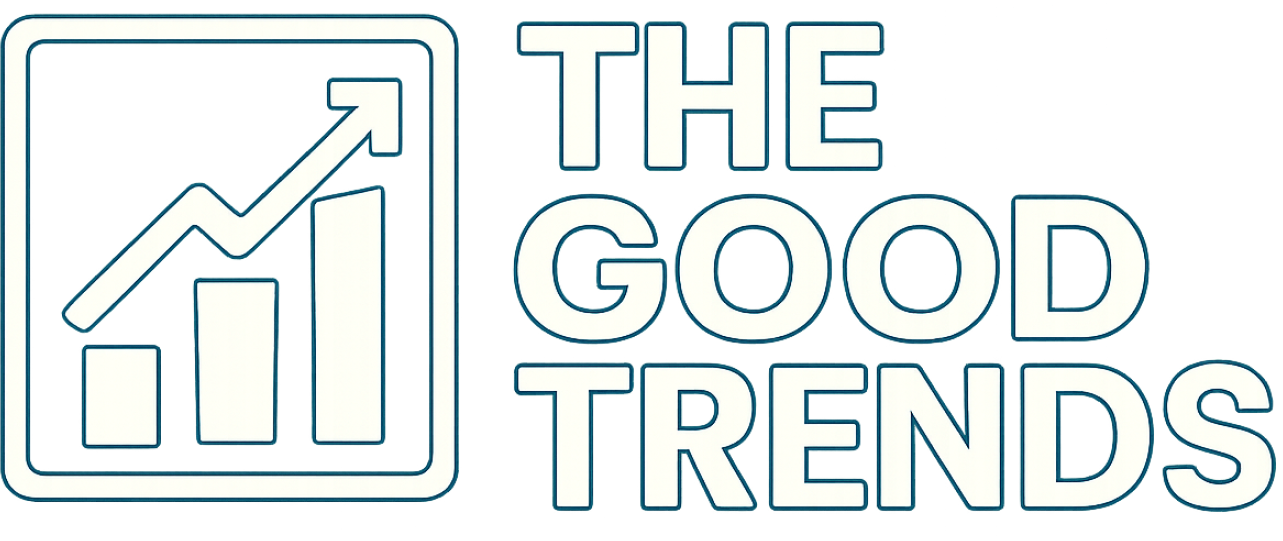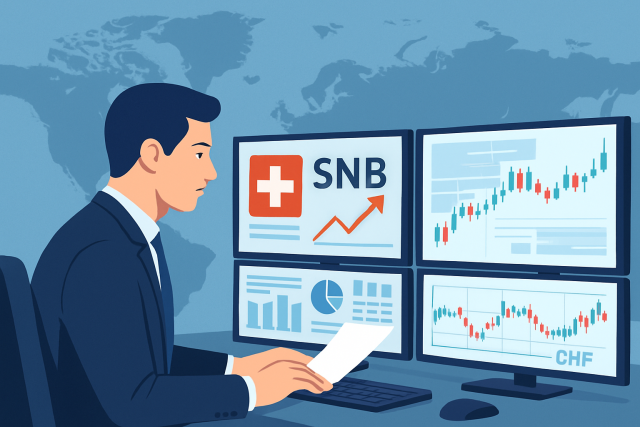
How to interpret Swiss central bank announcements for trading?
Discover how to interpret Swiss central bank announcements effectively to anticipate market moves an...
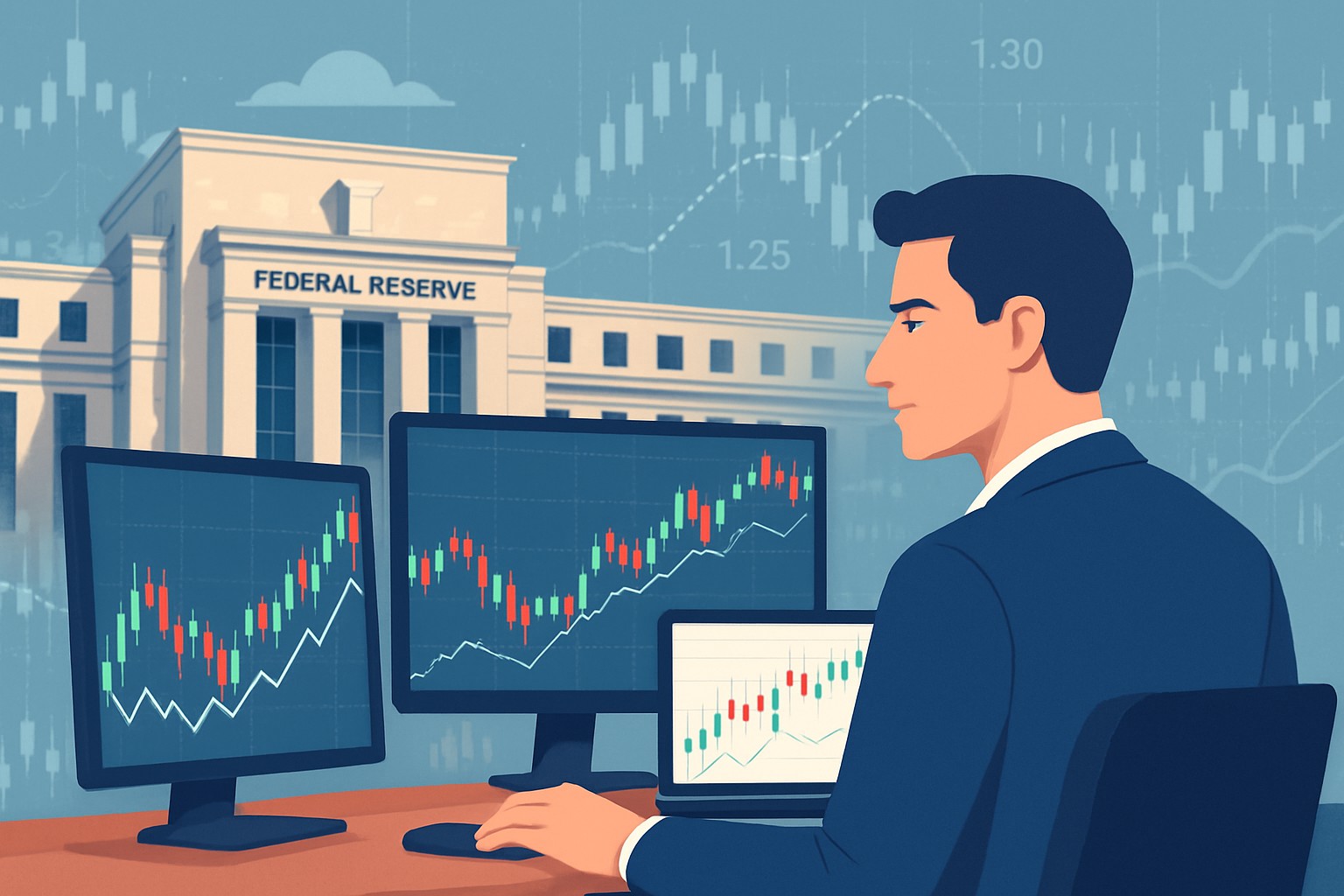
The Federal Reserve's tone and messaging about monetary policy really pack a punch when influencing global financial markets, especially the foreign exchange market. Traders who get a handle on the subtle difference between hawkish and dovish Fed talk usually find themselves one step ahead and better equipped to anticipate currency moves and tweak their strategies on the fly. When the Fed sounds hawkish it’s a sign they’re leaning toward tightening policies and hiking interest rates. This tends to give the U.S. dollar a nice boost. On the flip side, dovish comments hint at easier policies and lower rates and often put downward pressure on the USD. By reading between the lines of Fed language traders can catch a glimpse of where the market might be headed.
When you hear the Fed described as "hawkish" or "dovish" it’s about their stance on monetary policy. Hawkish remarks mean they’re focused on keeping inflation in check and gearing up to increase interest rates. Conversely, dovish language hints at worries over growth or jobs and suggests a softer touch with lower rates and extra support to keep the economy humming.
It helps to avoid jumping to overly simple conclusions. Hawkish doesn’t immediately mean a rate hike is just around the corner. It more so hints at a general tendency to tighten things up. On the flip side, dovish doesn’t guarantee that rates will stay low or go down. It simply reflects a softer stance, ready to ease policy if the economy starts waving the white flag.
Forex markets tend to react sharply to what the Fed says because those communications help shape expectations around future U.S. interest rates—the main driver behind demand for the dollar. When the Fed takes a hawkish stance, the dollar perks up as investors anticipate better returns on U.S. assets. Conversely, if the Fed takes a dovish tone, the dollar usually feels pressure because lower rates make it less enticing.
| Forex Pair | Fed Tone | Market Expectations | Typical Currency Movement | Driving Factors |
|---|---|---|---|---|
| USD/EUR | Hawkish | Rate hikes are on the table as inflation keeps flashing red | USD tends to notch gains against the EUR | Higher U.S. yields usually pull in capital like a magnet |
| Dovish | Rate cuts or pauses look likely, thanks to growth jitters | USD typically softens versus the EUR | Lower U.S. yields often sap demand, making the dollar less appealing | |
| USD/JPY | Hawkish | Expect tightening moves and climbing interest rates | USD usually flexes its muscles against the JPY | Yield gaps and risk-off vibes tend to push these shifts |
| Dovish | Tilted towards easing, with rates staying on the cozy side | USD often takes a hit against the JPY | More risk-taking and carry trade unwinds often do the trick | |
| USD/GBP | Hawkish | Rates marching up as inflation refuses to cool off | USD commonly gains ground against the GBP | U.S. growth and divergent policies drive the action |
| Dovish | Growth worries push the Fed towards a softer tone | GBP tends to grab some strength against the USD | Relative easing and safe-haven flows sway the market |
Context really holds the key when it comes to decoding Fed comments. Markets aren’t just focused on the Fed’s words alone. They consider the broader economic landscape and previous policy moves as well as tricky geopolitical twists. For example, taking a hawkish tone during a global growth slowdown usually affects the dollar more gently than you might expect. Additionally, what the market was already expecting often shapes how much things actually change. If everyone has already factored in the hawkish vibes, the actual statements might barely cause a ripple.
Trade forex effectively by following Fed communications. Traders really need to zero in on subtle clues dropped in speeches, press conferences, meeting minutes and official reports. It is all about catching particular phrases that hint if the Fed is leaning toward tightening or easing. These little nuggets of language often reveal future policy moves well before official rate changes roll out.
At the 2023 Federal Open Market Committee meeting Federal Reserve Chair Jerome Powell described inflation as "unacceptably high" and emphasized the need for "ongoing rate increases." He took a hawkish stance that triggered a sharp rally in the USD. Meanwhile the recent minutes brought up "concerns about slower growth and financial market volatility" lending the Fed a surprisingly dovish tone that put some downward pressure on the USD.
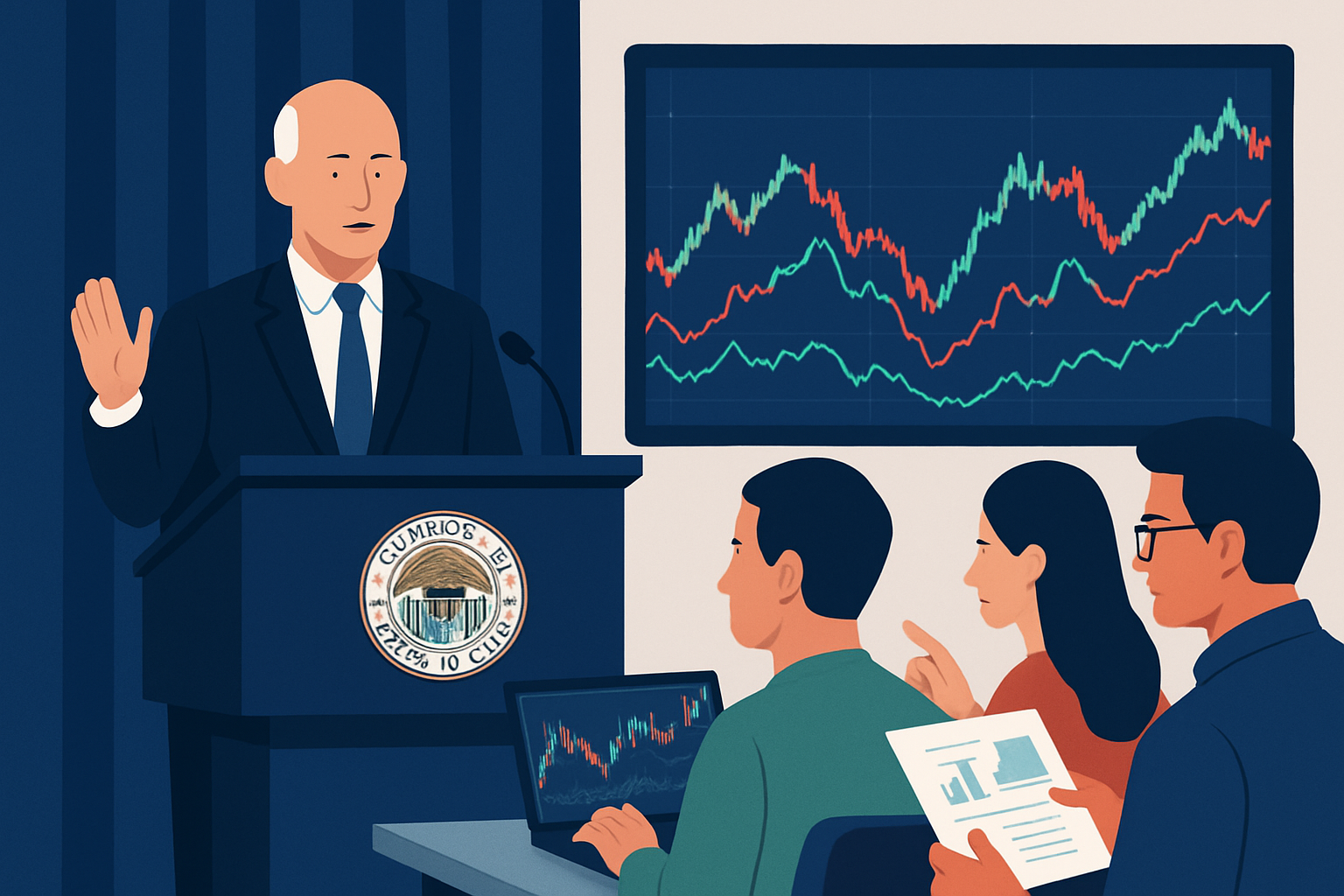
Traders monitor Federal Reserve statements and forex charts closely to respond to hawkish and dovish cues.
Incorporating an analysis of the Fed’s tone into forex trading strategies means keeping a close eye on their communications and blending those nuggets of insight with solid technical analysis. Traders usually come out ahead when they resist the urge to jump on every blip of short-term noise, instead zeroing in on signals supported by rock-solid economic data.
Keep a close eye on Fed communications whether it’s official statements or press conferences. Those detailed meeting minutes can also be surprisingly telling.
Tune into key words and phrases that hint at a hawkish or dovish stance because sometimes it’s all about reading between the lines.
Cross-check these Fed signals with the freshest economic data like inflation and employment figures since that’s what really moves markets.
Use technical analysis tools from platforms like TradingView to help you nail your timing for entry and exit points because extra insight never hurts.
Always use stop losses and manage your position sizes wisely since the market can throw curveballs when you least expect it.
Common trade setups often revolve around breakout trades right after Fed announcements, when volatility tends to spike along with those unmistakable hawkish or dovish signals. Traders usually try to get ahead of the game, positioning themselves based on previews or speeches hinting at possible policy shifts. Sticking to discipline and mixing fundamental analysis with technical cues generally pays off better in the long run.
One common pitfall I have noticed is jumping the gun on rumors or vague signs before the whole story unfolds, often resulting in losses when the market takes an unexpected turn. It’s also wise for traders to watch out for over-leveraging just because they’re banking on certain Fed moves.
Taking a closer look at real Fed announcements really helps shed light on how theory plays out in the real world. Recent cases show how even subtle shifts from hawkish to dovish language can quickly send USD volatility on a rollercoaster ride.
| Date | Fed Tone | Key Statements | Immediate USD Reaction | Subsequent Trend | Lessons Learned |
|---|---|---|---|---|---|
| March 2023 | Hawkish | "Inflation remains unacceptably high," driving home the point that rate hikes aren’t going anywhere anytime soon. | USD jumped sharply against major currencies, catching some off guard. | USD stayed strong for several weeks, holding its ground like a champ. | Hawkish comments usually give the USD an immediate and lasting boost—seems like a reliable trend to me. |
| June 2023 | Dovish | "Economic growth risks increasing," hinting at a pause or a more cautious approach to rate hikes. | USD fell moderately as markets priced in the slower pace, nothing too dramatic but noticeable. | Dollar softened for about a month before settling into a more neutral stance. | Dovish signals often mean the USD weakens for a while, though reversals do pop up now and then. |
| September 2023 | Hawkish | "Labor market remains strong; inflation pressures persist." | USD surged notably, especially putting some muscle behind it versus the EUR and JPY. | Upward momentum pressed on despite a mixed bag of data, showing the market’s resilience. | Strong labor numbers paired with hawkish talk tend to light a fire under the USD rallies, in my experience. |
| December 2023 | Dovish | "Financial conditions tightening; potential to slow pace of hikes." | USD slipped as traders mulled over the possibility of rate pauses, a subtle but telling move. | USD traded sideways amid ongoing inflation jitters and uncertainty. | Fed’s cautious tone often sparks market adjustments and a bit more volatility—keeps traders on their toes. |
Markets can sometimes throw out false starts or whipsaws when the Fed’s signals are murky or don’t line up with economic data. Take traders, for example—they might jump the gun and price in a dovish stance only to get blindsided by a hawkish pivot later. Patience is key here. Leaning on clear indicators and mixing fundamental analysis with technical tools like those on TrendSpider often gives traders a better shot at sidestepping these traps.
Fed comments definitely hold a lot of sway in forex markets, but leaning on them solely can be a bit of a tightrope walk. A more balanced approach mixes Fed signals with economic data and those unpredictable geopolitical events that tend to steer the bigger economic picture.
By weaving together various data points with Federal Reserve statements, traders can get a much clearer picture of what’s driving the market, particularly when navigating the hawkish vs dovish tone. Take a scenario where the Fed sounds hawkish but geopolitical tensions stir the pot. Suddenly, the dollar might not flex its muscles as expected because investors often seek comfort in other safe-haven assets. Platforms like TradingView are a godsend here because they let traders layer fundamental events over technical indicators. This helps them nail down the best timing and size for their trades.
Are you tired of juggling multiple tools for your trading needs? TradingView is the all-in-one platform that streamlines your analysis and decision-making.
With its powerful charting capabilities, real-time data, and vibrant community, TradingView empowers traders like you to stay ahead of the market. Join thousands who trust TradingView for their trading success.
As a dedicated trader, you know the power of technical analysis in navigating the financial markets. TrendSpider is the cutting-edge tool you need to take your trading strategies to new heights. With its advanced charting capabilities and automated pattern recognition, TrendSpider empowers you to make informed decisions faster.
14 posts written
Born in a family of traders, Emily Leroux combines inherited wisdom with modern approaches, seamlessly bridging the gap between traditional and innovative trading methodologies.
Read Articles
Discover how to interpret Swiss central bank announcements effectively to anticipate market moves an...

Discover what protectionism means in global trade, why countries use it, and its effects on economie...

Discover how understanding and managing notional value empowers Binance traders to accurately assess...
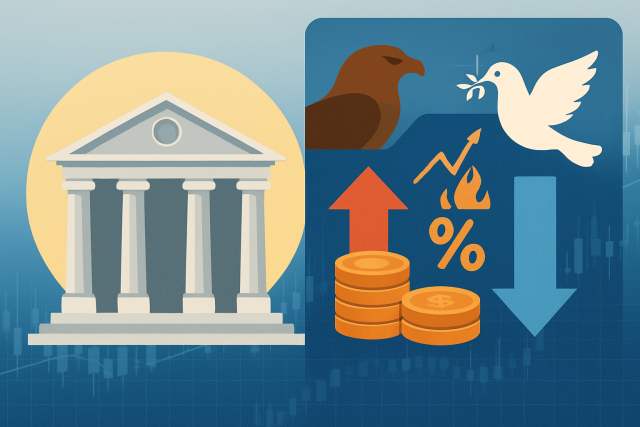
Hawkish statements signal central banks' concerns about inflation and interest rate hikes. Learn wha...
